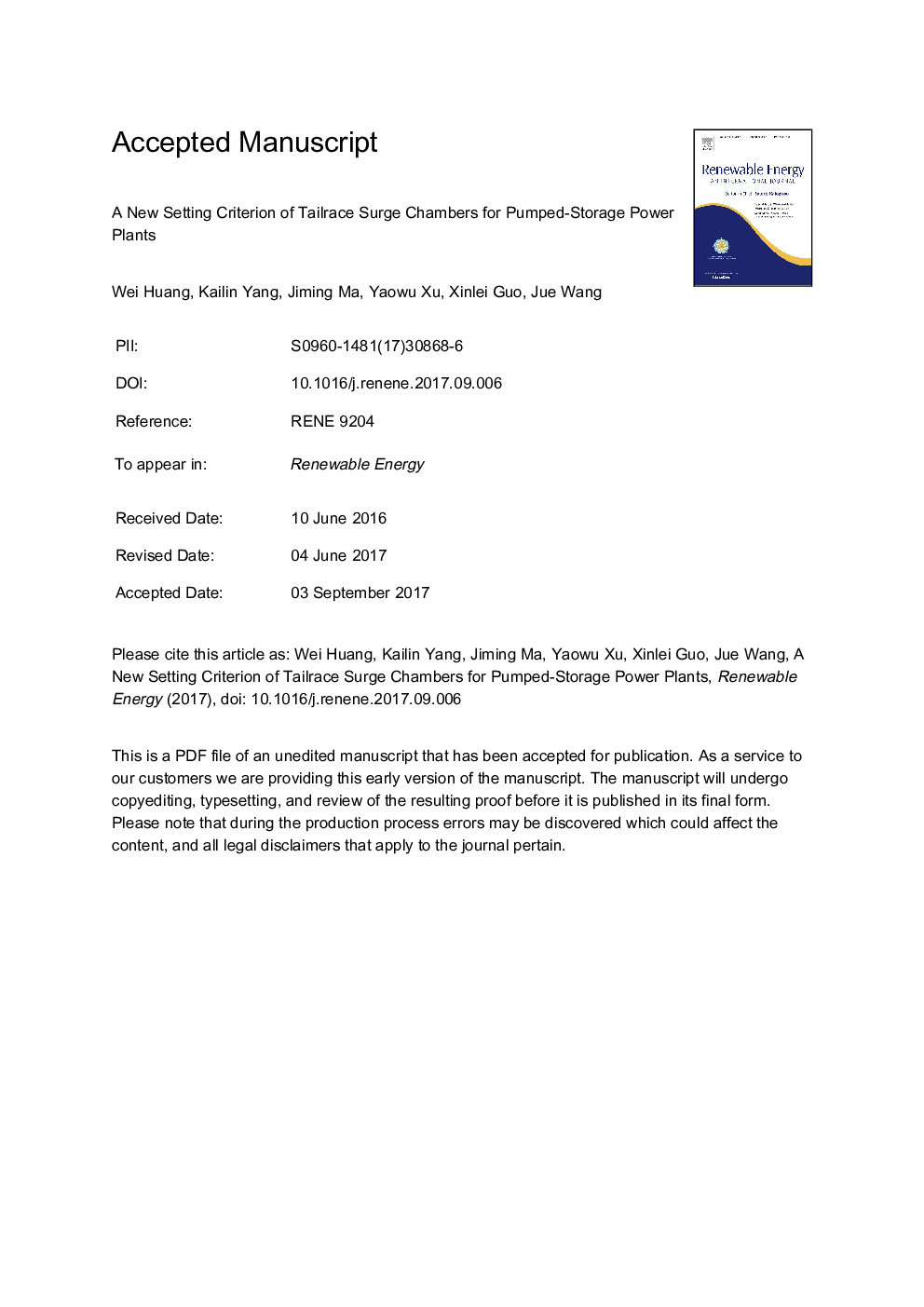| Article ID | Journal | Published Year | Pages | File Type |
|---|---|---|---|---|
| 4925893 | Renewable Energy | 2018 | 20 Pages |
Abstract
To determine the conditions under which a pumped-storage power plant (PSPP) requires a tailrace surge chamber and to account for the time sequence superposition of water hammer vacuum, velocity head vacuum and head loss vacuum, we derived a new setting criterion using the rigid water hammer theory. Next, several setting criteria of tailrace surge chambers are investigated, and comparisons among them are conducted for certain PSPPs. The results show that the critical length of tailrace system (CLTS) calculated by the Chinese empirical discriminant are much larger, resulting in an adverse impact on safe operation; according to the American empirical discriminant, Tongbai and Heimifeng PSPPs with large safety margins in the draft tube need to set up the tailrace surge chambers, leading to unnecessary waste; for Tongbai and Yixing PSPPs with large differences in head loss and guide vane closing law, only 5-8Â m difference in CLTS is acquired based on the Japanese empirical discriminant, which is not practical; the discriminant results obtained by the new setting criterion are consistent with the actual setting conditions, and it is more realistic to incorporate the effective closing time of guide vane and the relative head loss coefficient into the influencing factors.
Keywords
Related Topics
Physical Sciences and Engineering
Energy
Renewable Energy, Sustainability and the Environment
Authors
Wei Huang, Kailin Yang, Jiming Ma, Yaowu Xu, Xinlei Guo, Jue Wang,
